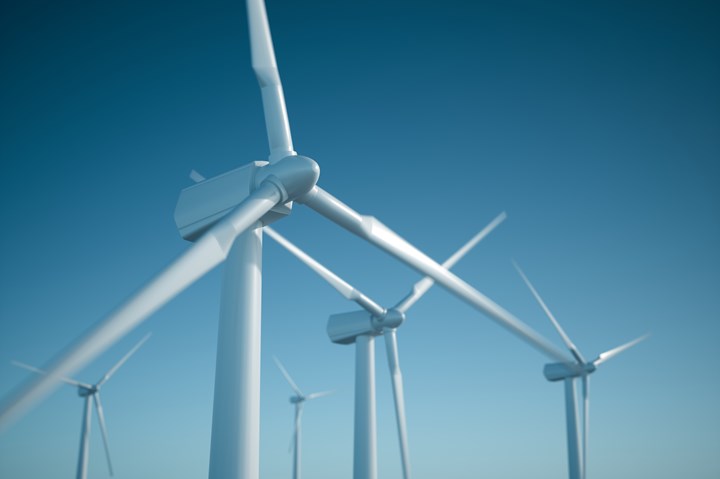GE Renewable Energy receives planning approval for wind blade manufacturing plant
Plant construction is set to begin later this year upon the finalization of all contractual documents and will be completed in 2026, making the Dogger Bank the world’s largest offshore wind farm.
GE Renewable Energy (Paris, France) has received the official planning approval for its Teesside offshore wind blade manufacturing plant from local planning authorities. This is the first major milestone in the lead up to the construction of this facility on the South Bank of Teesworks.
According to the company, the plant construction should begin later in 2021 upon the finalization of all contractual documents. As previously announced, LM Wind Power (Kolding, Denmark) will operate the facility, which will be dedicated to the production of its 107-meter-long offshore wind turbine blades, a key component of GE’s Haliade-X.
Olivier Fontan, president & CEO of LM Wind Power, says, “We are delighted to have received this important approval from the local planning authorities and are thankful for the collaboration between all parties involved. There is still a lot of work in front of us, but this an important milestone for the construction and future opening of the facility. We are proud of the contribution we will be making in rejuvenating this industrial cluster and helping it play a key role in future of renewable energy.”
Recruitment for the plant is scheduled to begin in mid-2022, with an estimated 750 direct positions to be filled. An additional 1,500 indirect jobs are to be created to support the entire supply chain around the factory.
When production starts, the Dogger Bank offshore wind farm is projected to benefit directly from the blades produced at this new plant. The three phases of the Dogger Bank Wind Farm, powered by GE’s Haliade-X offshore wind turbine, will reportedly have a combined installed generation capacity of 3.6 gigawatts (GW) — enough to power six million U.K. homes. According to GE, upon completion in 2026, Dogger Bank will be the world’s largest offshore wind farm.
Related Content
-
NCC reaches milestone in composite cryogenic hydrogen program
The National Composites Centre is testing composite cryogenic storage tank demonstrators with increasing complexity, to support U.K. transition to the hydrogen economy.
-
Honda begins production of 2025 CR-V e:FCEV with Type 4 hydrogen tanks in U.S.
Model includes new technologies produced at Performance Manufacturing Center (PMC) in Marysville, Ohio, which is part of Honda hydrogen business strategy that includes Class 8 trucks.
-
Infinite Composites: Type V tanks for space, hydrogen, automotive and more
After a decade of proving its linerless, weight-saving composite tanks with NASA and more than 30 aerospace companies, this CryoSphere pioneer is scaling for growth in commercial space and sustainable transportation on Earth.
















